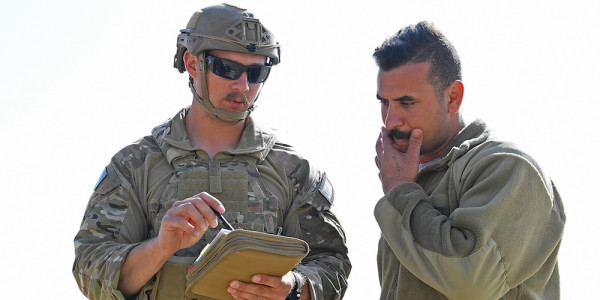

When I was a staff officer in the Army, once a quarter we’d meet for a day of the most painfully long PowerPoint briefs you can imagine. Quarterly training briefs (QTBs) would lay out all of our unit’s training goals and our overarching status on our mission essential task list (METL). These meetings were a long list of slides with red, amber, or green bubbles that gave a snapshot of how close we made it to our goals.
Turns out, the civilian world has many of the same processes. Actually, the larger organization you join, the more likely it is to feel like the military. That’s why I was surprised when I joined a startup and we had a meeting that felt just like a QTB. Granted, we were on the large side of a startup, with 140 people, but when we assembled for an “all hands meeting,” I saw the projector fire up and slides load, I felt like I was right back in the Fort Riley, Kansas battalion classroom.
While the format felt mighty familiar — each section head presenting what their team accomplished in the last quarter and setting goals for the next — the acronyms were different (and thankfully, they were using Google Slides, not PowerPoint).
Once you make the jump to a civilian job, you’ll have to do some internal translating for the first few months. To help you get started, here is a selection of acronyms and phrases you need to know:
All hands meeting or town hall: This is what many companies name their monthly or quarterly meetings that the entire staff attends.
OKR: Objectives and Key Results. This goal framework was originally developed by Intel’s CEO and later made popular by Google. Many startups and tech companies use OKRs the way we used METL in the Army. For example, in the military, an objective might be to make a battalion 90% deployable. A key result would be all companies reaching a 95% rate for weapons qualification or hitting 90% for medical readiness. A civilian company’s objective could be to increase profit by 10% month over month for the next six months. A key result for a tech company could be increasing page views from 300,000 to 800,000 in those six months. Another key result could be hitting app download numbers each month. Results are quantifiable markers of progress toward the objective.
KPI: Key Performance Indicators. In the military a KPI could be PT scores. A civilian example could be customer service ratings or number of fans on social media. Anything that indicates performance — good or bad — can be an indicator.
Fiscal Year (FY): Unlike the military’s fiscal year, based on the U.S. government’s October schedule, civilian fiscal years are whenever the company decides to mark a year in regards to accounting. Some start in January at the beginning of the new year. But, in some industries, a June fiscal year is the norm.
EOD: End of Day. This is the civilian version of COB; end of day versus close of business — it means the same thing.
PM: Product or product manager, most often heard at tech companies or digital agencies.
Looping you in: Adding you to the conversation.
Circle back: We’ll come back to it.
It’s a safe bet you’ll hear more acronyms specific to the industry you choose than the ones outlined above. And, over time, you’ll get to know civilian jargon just as well as you learned the military’s endless amount. But it’s always smart to learn some of the language before you even set foot in an interview. In my experience, at least, I heard OKRs in my first interview and had to scramble to figure out what it meant.
WATCH NEXT: